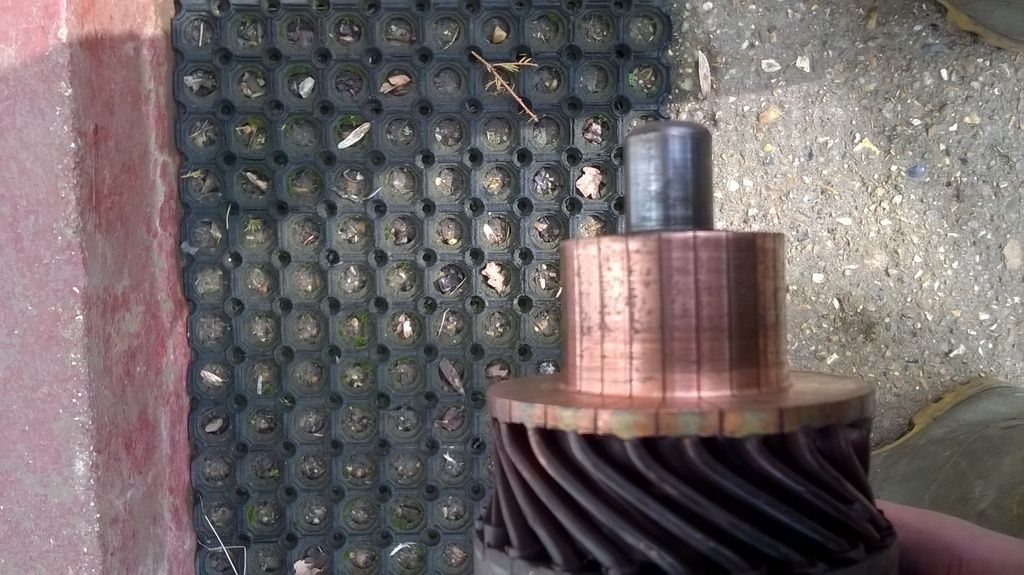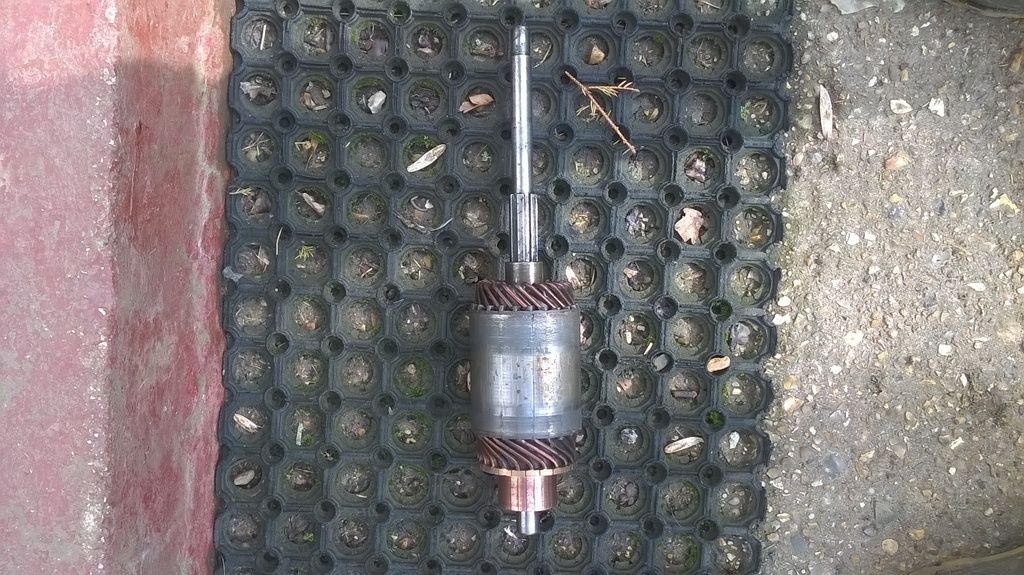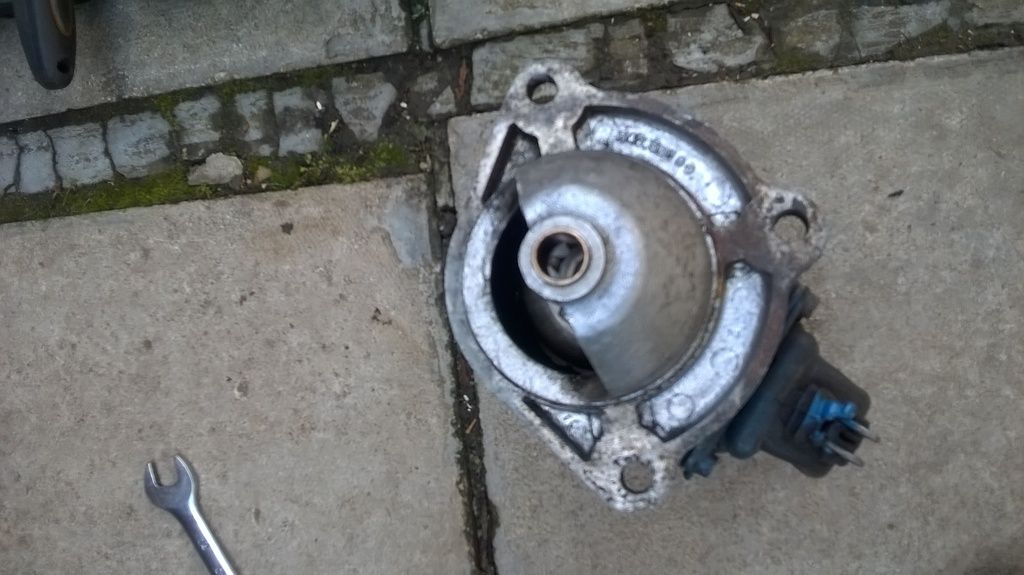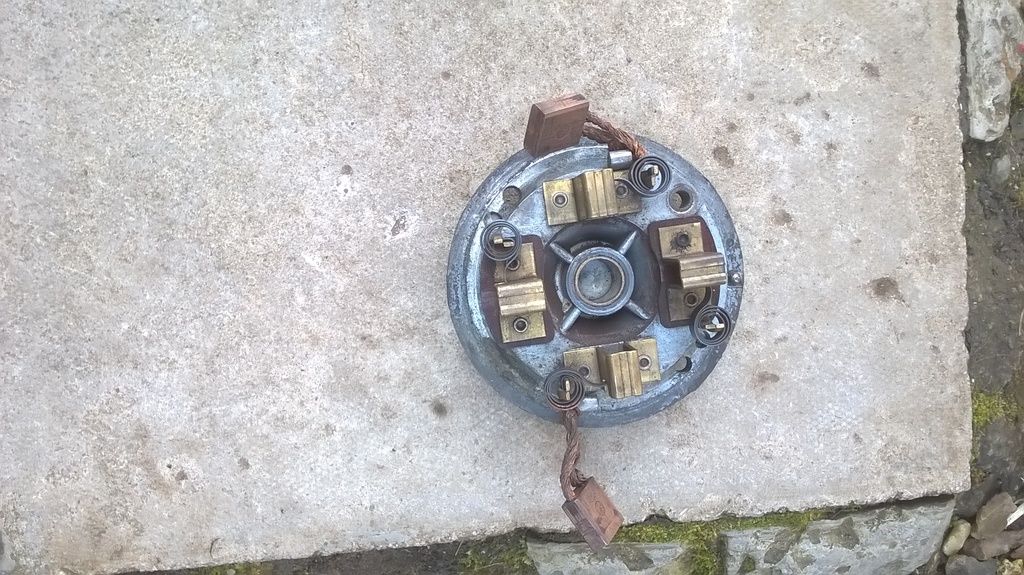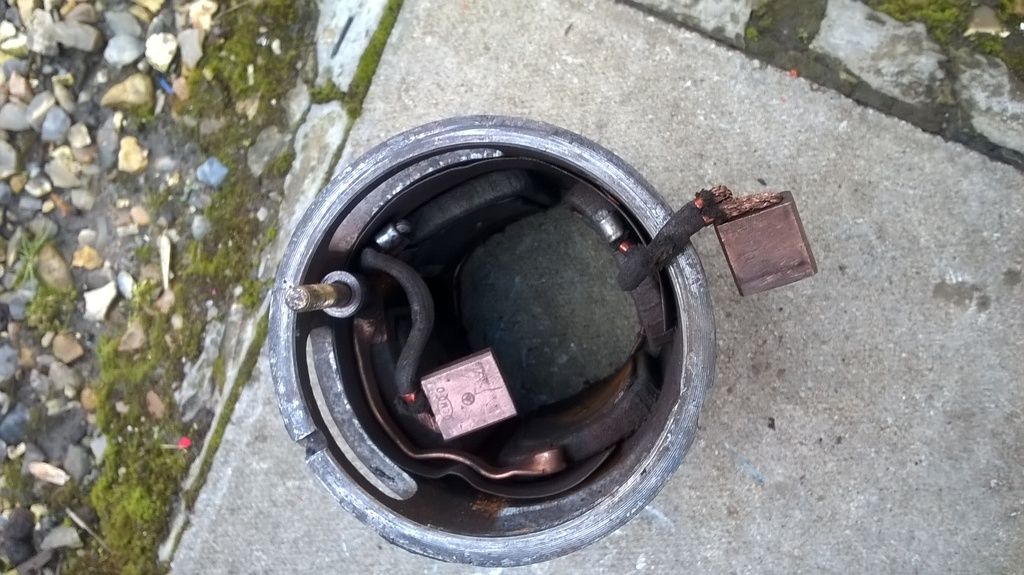Sounds like you probably need to take it somewhere to have it looked at, unless you have and know how to use a 'Growler' to check the com out, a straight continuity test on the field coils with a bulb and battery or multimeter if you have one available might locate a field coil failure.
If you do have a voltmeter handy and haven't lost the will to live yet, you could try the following
Measure voltage over battery terminals (keep a note of this and subsequent readings as vee may haff kvestions later

)
Clip it across across the ground connection at the motor and the battery connection stud of the solenoid - should read the same as across the battery. (if not find why) Bridge the starter switch on the motor with a bit of wire so the motor spins without the pinion engaging, you should see a voltage drop and hear the motor spin, note the reading then repeat on the lever so the motor is under load
Move the meter lead from battery side to the motor side stud on the solenoid and repeat the pinion out & pinion engaged tests.
Oh and just to exlude solenoid coil, if you have one with the rubber boot where you can manually actuate the sol you could try that as well
I would expect the voltage with pinion out to be higher than when under load, if there is a mismatch between the equivalent tests from battery side compared to motor side of solenoid I'd suspect the solenoid, unlikely as two batteries on or jump lead to motor stud you found no difference. We may see something in the readings that rings an alarm bell.
May not help but I find it so easy to overlook something and convince myself I've covered it - my particular blind spot is overlooking ground / earth / return line faults

